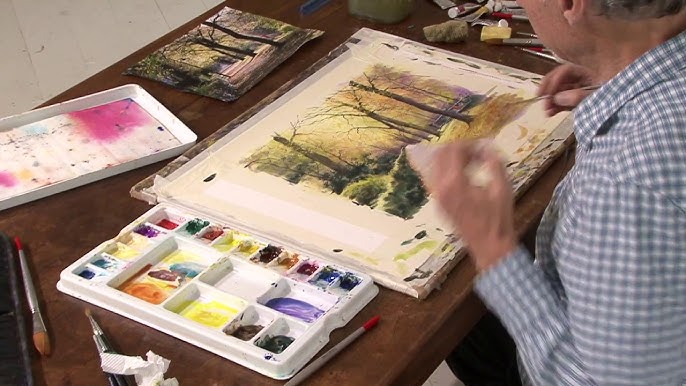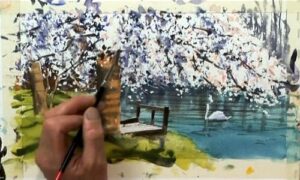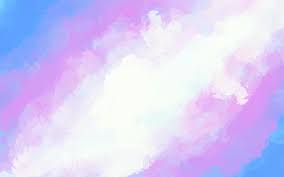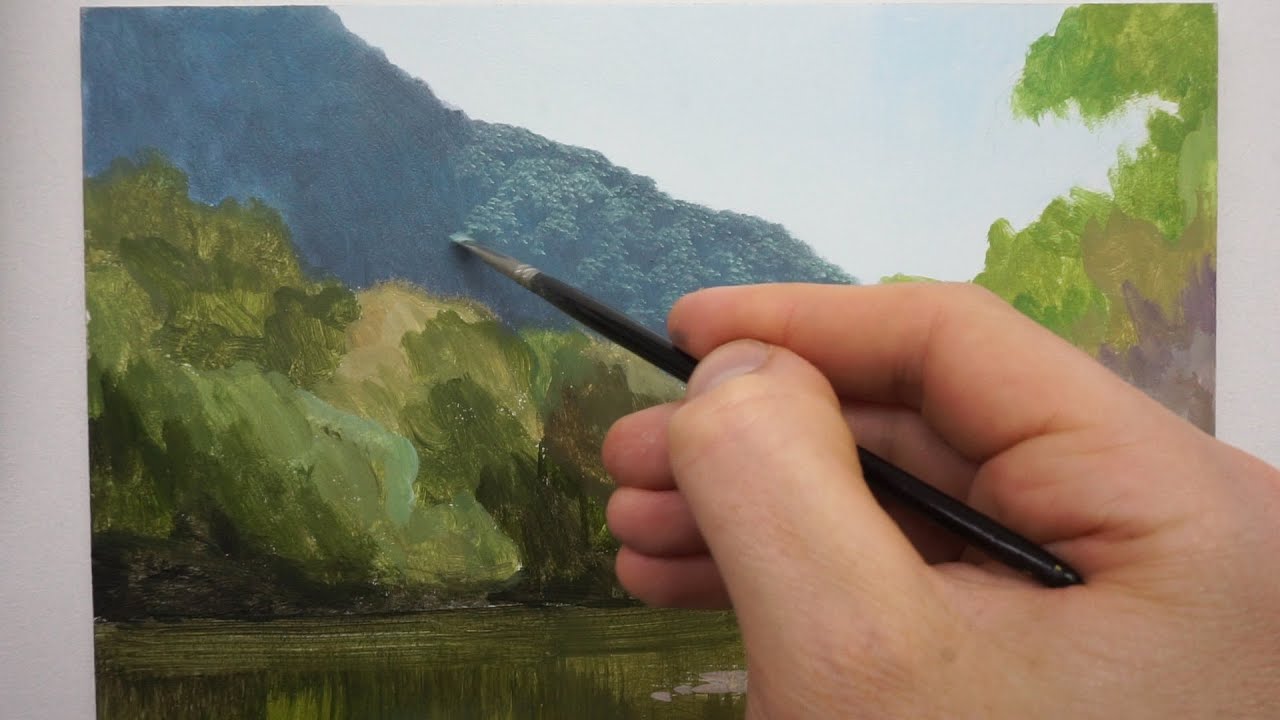How To Paint A Watercolor Landscape

How to paint a watercolor landscape – Watercolor painting allows artists to capture the beauty of landscapes with its unique and vibrant qualities. Nature has long served as a source of inspiration for artists. Its sheer beauty and splendor leave no one indifferent. However, an artist’s purpose is to represent not only the landscape, but also the emotion and ambiance of the setting.
Watercolor landscape painting has been a popular art style for ages. Yes, watercolor landscapes are delicate and captivating, but they are also achievable for even the most inexperienced watercolor artists.
Painting seascapes, mountain ranges, or cityscapes in watercolor may transport people to an abstract world of peace and nostalgia.
Read Also: How To Make Homemade Pizza Dough
A Step-by-Step Guide for Beginners On How To Paint A Watercolor Landscape
If you’re a beginner looking to explore the world of watercolor landscapes, this step-by-step guide will walk you through the process and provide answers to common questions along the way.

Materials Needed:
- Watercolor paints (a basic set with primary colors)
- Watercolor paper (cold-pressed or rough)
- Paintbrushes (various sizes, including a round brush)
- Water container
- Palette or mixing surface
- Paper towels or a cloth
Step 1: Plan Your Composition
Start by envisioning the landscape you want to paint. Consider elements such as mountains, trees, water, or buildings. Sketch a simple outline of your composition on the watercolor paper lightly using a pencil. This initial sketch will serve as your guide throughout the painting process.
Step 2: Wet the Paper
Moisten your watercolor paper by running a wet brush over the surface or submerging it in water briefly. This helps the colors blend more easily and gives a smoother application. Make sure the paper is evenly damp but not excessively wet.enoughinfo
Step 3: Apply the Sky
Begin with the sky by selecting your desired colors. Use a large brush to apply a wash of color from the top of the paper downward, gradually lightening the hue as you move towards the horizon. Blend different colors together gently, keeping the strokes horizontal to mimic the sky’s natural appearance.
Read Also: How to draw a cat step by step(All You Need To know)
Step 4: Paint the Background
Once the sky is dry, move on to the background elements such as mountains or distant trees. Use lighter tones and cooler colors to create the illusion of depth and distance. Apply broad brushstrokes or washes to establish the basic shapes and values of these elements.

Step 5: Add Middle Ground and Foreground
Next, paint the middle ground elements like trees, hills, or bodies of water. Use a combination of light and dark tones to create contrast and texture. Add details and highlights with smaller brushes, gradually building up the layers to create depth.
Step 6: Refine the Details
Focus on the foreground elements, such as trees, rocks, or flowers. Use smaller brushes and finer strokes to add details and texture. Pay attention to light and shadow to bring the scene to life. Experiment with techniques like dry brushing or lifting off paint to create texture and highlights.
Step 7: Allow for Drying and Adjustments
Let your painting dry completely before making any adjustments or adding final touches. Evaluate your composition and make any necessary changes, such as enhancing colors, refining edges, or adding additional details to enhance the overall impact of the landscape.
Step 8: Protect and Display Your Artwork
Once your painting is completely dry, protect it by applying a fixative or using a spray varnish. This helps preserve the colors and prevents smudging. Frame your artwork or use a mat to display it proudly.How To Paint A Watercolor Landscape
Read Also: Senior Java Developer Job Description
FAQs & Answers:
How do I achieve vibrant colors in watercolor landscapes?
To achieve vibrant colors, use high-quality pigments, layer multiple washes, and let each layer dry before applying the next. Start with light washes and gradually build up the intensity. Experiment with different color combinations and learn how they interact on the paper.
How do I create a sense of distance in my landscape?
To create depth and distance, use lighter tones and cooler colors in the background or distant elements. Add less detail and keep the brushstrokes looser. As you move forward in the composition, use darker tones, warmer colors, and more defined details.
How can I fix mistakes in watercolor painting?
Watercolor is known for its transparency, making it challenging to fix mistakes completely. However, you can try blotting the mistake with a clean, damp brush or lifting off the paint with a paper towel or a soft cloth. If the mistake persists, you can paint over it once it’s dry or incorporate it into the overall composition.
Read Also: How To Treat A Burn At Home (All you need to Know)
How can I create realistic water reflections in my landscape?
To create realistic water reflections, paint the water area with the same colors and shapes as the objects or scenery above it, but in a slightly lighter tone. Use horizontal brushstrokes to mimic the reflection’s smoothness, and gently blend the colors with clean water to soften the edges.
Should I paint the landscape from a reference photo or my imagination?
Both approaches have their merits. Painting from a reference photo provides guidance and helps you capture realistic details. On the other hand, painting from your imagination allows for creative freedom and personal expression. Start with reference photos to practice observation, then gradually develop your ability to paint from memory or imagination.
How can I achieve a sense of texture in my landscape painting?
Experiment with different brush techniques to create texture. Dry brushing can simulate the appearance of rough surfaces like tree bark or rocks. Splattering or spattering watercolor onto the paper can mimic the effect of foliage or falling rain. Use a toothbrush or a stiff brush to flick paint for added texture.
How do I prevent my watercolor paper from buckling or warping?
To prevent buckling, stretch your watercolor paper before painting. Soak the paper in water for a few minutes, then tape it securely onto a board or flat surface using artist’s tape. Let it dry completely, and it will remain taut throughout the painting process. Alternatively, you can use heavier weight watercolor paper or purchase pre-stretched watercolor paper.
Read Also: How To Treat Scalp Psoriasis Naturally: 10 Home Remedies
Conclusion:
Painting a watercolor landscape can be a rewarding and enjoyable artistic endeavor. By following these step-by-step instructions and exploring the answers to common questions, you’ll gain a solid foundation to begin your watercolor landscape journey. Remember to practice, embrace experimentation, and allow your own unique style to emerge. With time, patience, and a love for the process, you’ll create beautiful watercolor landscapes that capture the essence of nature.




